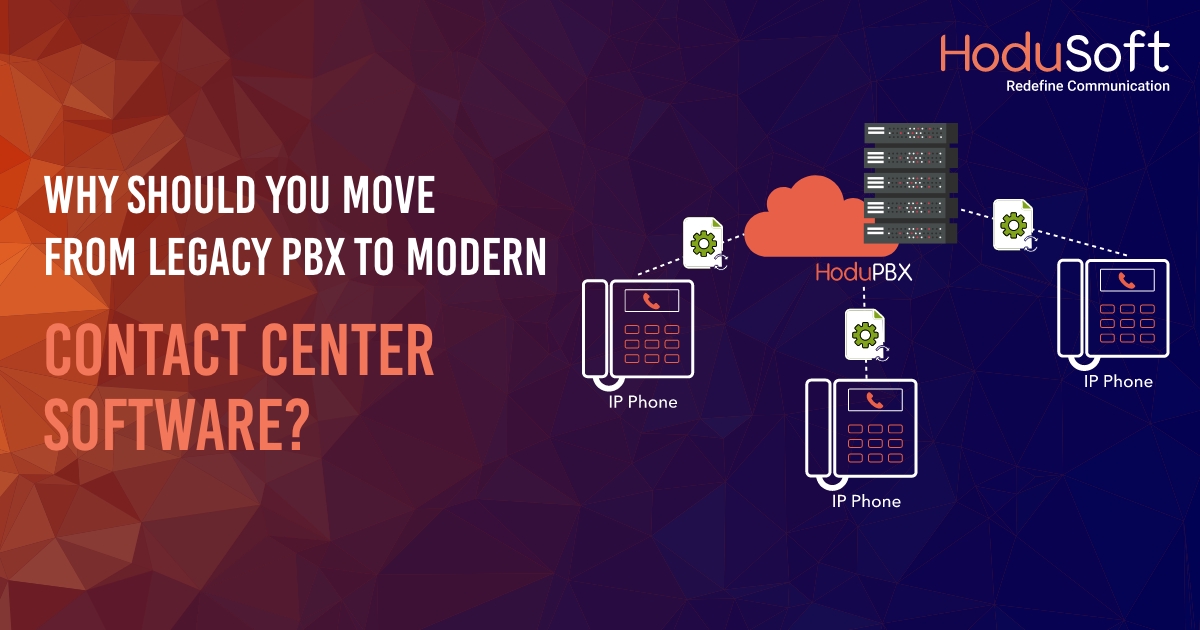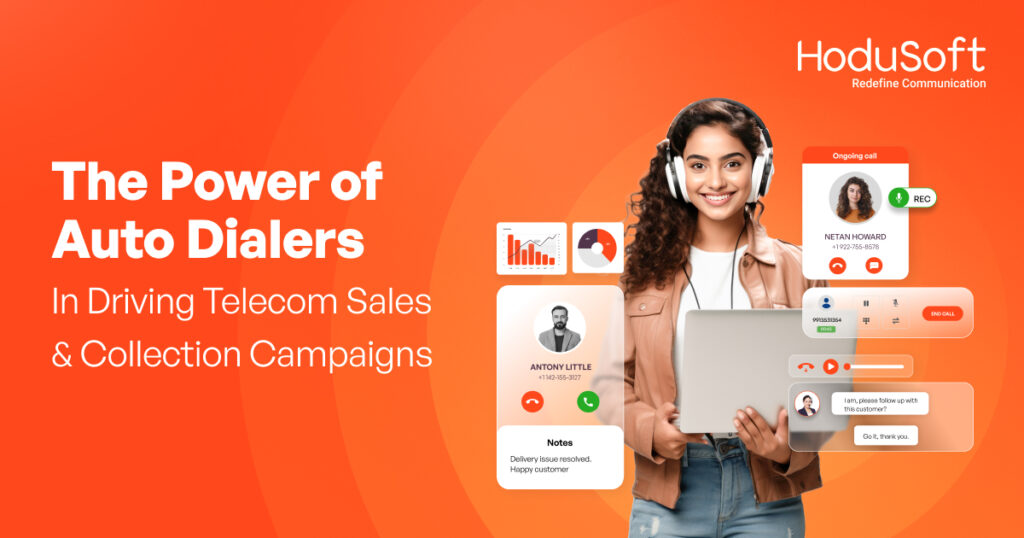Why should you move from Legacy PBX to Modern Contact Center Software?
The one point every business harping upon over the last two years unanimously is customer experience. Any customer service leader will tell you that customer experience has always been a second fiddle— the lowest rung in the rank of elites among sales, marketing, and finance. However, the slow movement in work for years has suddenly found a voice. Organizations using legacy PBX (Private Branch Exchange) or enterprise phone systems are giving way to prioritize customer service with modern contact center software.
For a long time, a PBX system was all a business needed to meet its communication needs. With innovation, technological advancement, and increasing expectations of customers, modern contact center software has become imperative. While the advantages of on-premise enterprise phone systems are numerous– reliability, call quality, durability, own-and-operate, they also have resistance to change. In a survey, Gartner found that customer service and support leaders still cling to misconceptions about what customers want and how they behave. Amid the uncertainty, it is better to make decisions based on facts, understand what a customer wants and take steps proactively before he switches.
Some businesses are taking the lead in change, skipping the in-betweens to jump straight to modern contact center software. It enables them to interact with consumers on the service channels they prefer.
Not just an upgrade from PBX to IP PBX
Often organizations move to the next best thing available. In the case of PBX, the IP PBX (Internet Protocol Private Branch Exchange) is a natural choice. But there is a reason why some organizations are skipping the regular and opting for the best contact center software.
How do they differ: what lies behind the three enterprise communication software?
| PBX | IP PBX | Contact center software | |
| Use | Used for switching of phone conversations, supports outbound and inbound calls | Can handle both phone calls and data | VoIP-based software for omnichannel communication—call, video, message, and more |
| Set-up | Need to buy, set up, and maintain the legacy PBX system | Available both as on-premise and in-cloud service | Can be accessed over the cloud or set up on-premise |
| Costs | Save money when compared with PSTN, but operation costs are high | Saves phone bills, especially long-distance, and international calls | Lower setup and installation costs, requires monthly service and maintenance fee |
| Functions (i) | Limited functionality to support new features and technologies | Supports LCR (least cost routing), ACD (automatic call distribution), auto-provisioning, real-time analytics | Advanced contact center and call center software supports AI, NLP, Speech and Voice analytics |
| Functions (ii) | A traditional style of call transfer and conference | Also supports call transfer using LCR, and conference | Has several options to transfer calls intelligently such as skill-based routing |
| Functions (iii) | Limited flexibility and scale are defined by the number of slots | More flexibility and scalability than legacy PBX | Very flexible and scalable to support remote operations |
| Suitability | Suitable for internal communication and external calls | Facilitates business communication but cannot be used as an omnichannel vehicle | Effective for managing customer service and sales interactions |
The table above summarizes the key differences between the three most popular enterprise communication software used by businesses today. The IP PBX, contact center software, and call center system are the latter developments in business communication. Many organizations, especially the ones that have invested heavily into PBX have the inertia to transition to the latest versions. However, businesses realize that to stay competent and relevant is customer service is important. Let’s understand the benefits of transitioning to modern contact center software.
Benefits of modern contact center software
Omnichannel connect
There is no denying that having a presence on multiple platforms can significantly transform the customer experience. As a business, you are able to open up several channels for connecting with your customers and prospects and meeting them halfway.
You will be able to decode customers’ digital behavior and alert the agent of the customer’s intentions. Overall, this leads to faster resolution of customer concerns as your agents are prepared to take action before the actual conversation.
Read Also: Why You Should Switch Your Phone System to IP PBX Software
Reduces costs
Having invested in a legacy PBX system, you may be wary of the high costs of getting an advanced contact or call center system. However, the good news is that the contact center software may cost you much less than legacy PBX. Several surveys underline the observation that in the long run, contact centers work out cheaper.
Fusing new technologies
Modern contact centers today are capable of using many new technologies such as artificial intelligence and machine learning among others. You can effectively leverage these to empower your teams with analytics and operational data, for proactive services. In addition, you can integrate the contact center software with CRM (customer relationship management) and SMS tools to enhance its utility.
The PBX phone systems, however, have a set of in-built functions that do not allow such integrations.
Automation to save time
The latest contact center software comes fitted with auto-dialers and other tools to reduce manual tasks. Various advanced auto-dialers such as Predictive, Progressive, and Power help to save time of service agents and employees.
24/7 support
Most of us are in the hybrid and remote working phase today, and the trend is likely to linger. Some organizations have already put systems in place to adapt to the ‘new normal’. Whilst, some are in the transitory phase. What this means is that you need to be prepared for a 24-hour working environment with remote work support. A contact center augurs well for these tasks. Nowadays, the software offers many features to let employees transition seamlessly and work. All this with no extra investment, only minor tweaks.
PBX systems, on the other hand, need dedicated staff for maintenance and if there is a hardware breakdown, it will mean making provision for a technician to repair the fault. In a contact center system, the provider usually handles updates and maintenance work.
Conclusion
Adopting modern contact or call center software means taking the next step toward a digital workplace. You can choose to do this in two ways:
- Complete migration in one phase
- Phased migration by opting for moving one solution in one instance
Whatever you choose, consider your workload, IT infrastructure, security, future needs and scalability. Discuss this with your contact center service provider in detail, who can assess your current status and suggest the best way to adapt without friction and minimum disruption.



